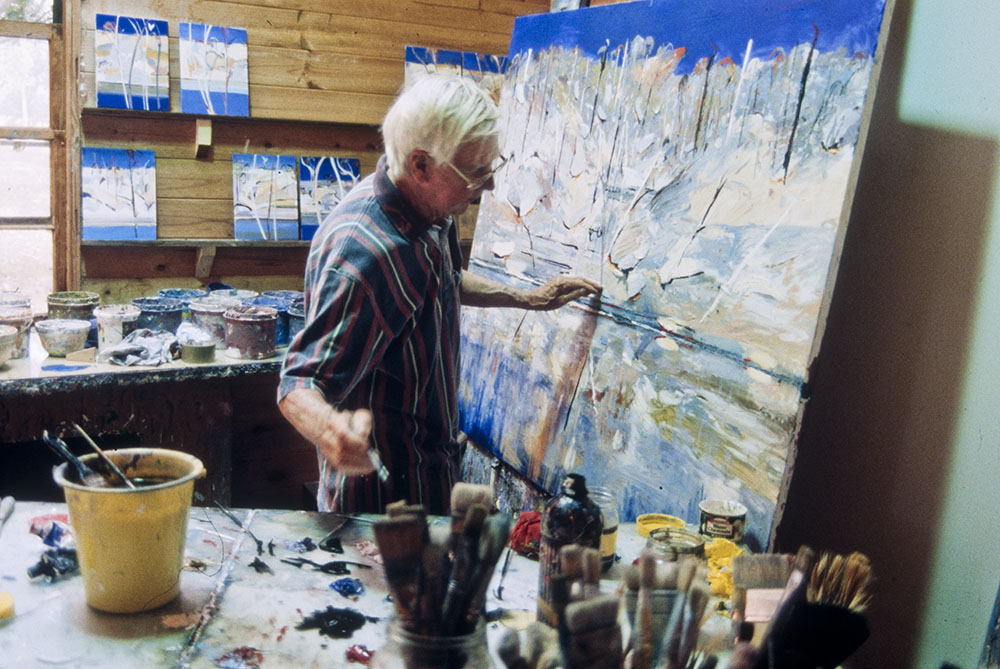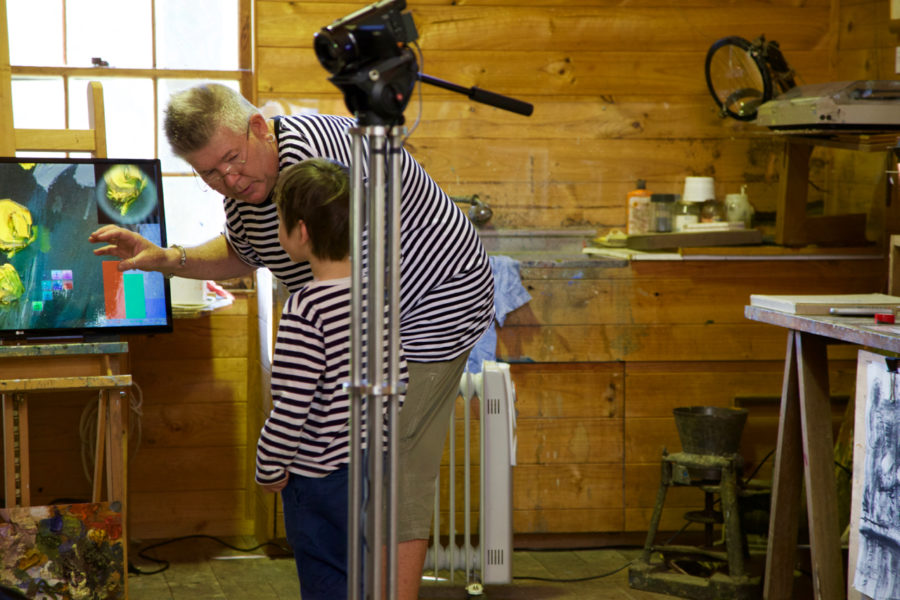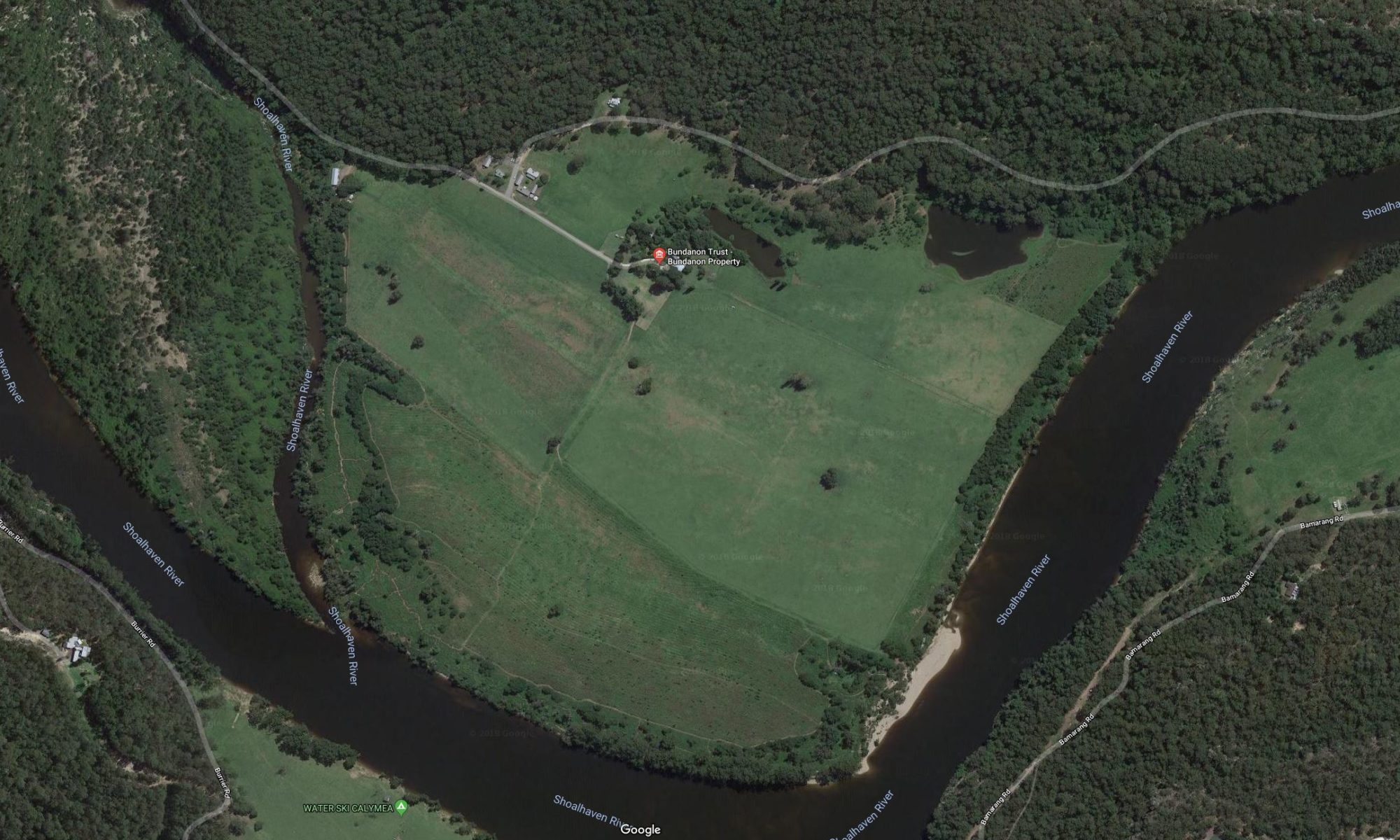The McKenzie family left Bundanon in 1926, following a tragic double drowning in the river. The property was leased to tenant farmers for half a century, running dairy and beef cattle. The next major transformation of the Bundanon landscape occurred in 1968, when the property was sold to art historian Sandra McGrath, her husband Tony, and art dealer Frank McDonald. Most of the working farm buildings were removed, trees planted, and an English-style cottage garden installed. A magazine article in the 1970s, entitled ‘The Happy Valley’, commented that ‘a Sydney art dealer has built a mid-nineteenth century landscape on a grand scale’. Bundanon was now less a working farm than an artists’ community; it was this environment that Arthur Boyd visited in 1971. He was so captivated by the landscape that he bought the nearby property Riversdale in 1974, then Bundanon itself in 1979. Boyd built his studio at the rear of the homestead in 1981 (the studio was the initial site of Nigel Helyer’s work Heavy Metal in 2016).
During his tenure at Bundanon, Arthur Boyd fought to preserve the environment from development and damaging activities such as sandmining. He was quoted many times in his belief that ‘you can’t own a landscape’. He realised his vision of protecting the natural and cultural heritage of Bundanon when the Commonwealth accepted Bundanon as a gift in 1993, establishing the Bundanon Trust. Boyd saw Bundanon as ‘a place for the community to enjoy the bush and the river, and a place to be used as a forum where those from every facet of the arts and science could get together’. Collaboration and interaction were essential: ‘I like the idea of people talking to one another,’ he stated. This project, with its collaboration between art and science, and its focus on the landscape and environment of Bundanon, develops the spirit of creative inquiry advocated by Arthur Boyd.


